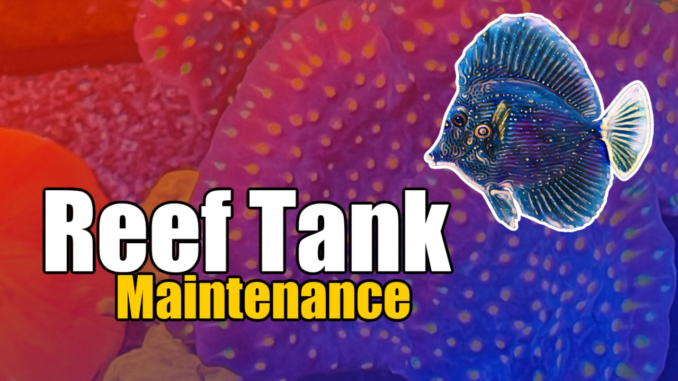
Maintaining a reef tank requires dedication, consistency, and an understanding of the delicate balance that keeps marine life thriving. Whether you’re a beginner or an experienced reef keeper, following a structured maintenance routine is essential to sustaining a healthy ecosystem. This guide outlines the key tasks involved in reef tank maintenance, broken down into daily, weekly, bi-weekly, monthly, and periodic schedules.
Daily Maintenance: Keeping a Close Eye on Your Tank
A few minutes each day can prevent long-term issues and ensure your reef is in peak condition.
1. Observe Livestock Behavior
- Check fish, corals, and invertebrates for signs of stress, disease, or aggression.
- Ensure all fish are eating and acting normally.
- Look for any missing or injured livestock.
2. Monitor Equipment Functionality
- Verify that lights, heaters, return pumps, and powerheads are functioning properly.
- Check that the auto top-off (ATO) system is maintaining stable salinity.
3. Maintain Water Levels
- Replace evaporated water with RO/DI freshwater to keep salinity stable.
4. Feed Livestock
- Provide appropriate food for fish, corals, and invertebrates.
- Consider target feeding certain corals and finicky eaters.
Weekly Maintenance: Water Quality and Basic Cleaning
These tasks help prevent the buildup of nutrients and keep your tank looking pristine.
1. Test Water Parameters
- Monitor salinity, alkalinity, calcium, magnesium, nitrate, and phosphate levels.
- Adjust dosing and feeding based on test results.
2. Clean the Aquarium Glass
- Use a magnetic algae scraper or pad to remove buildup on the glass or acrylic.
3. Inspect and Maintain Filtration
- Rinse or replace filter socks, sponges, and mechanical media.
- Empty and clean the protein skimmer collection cup.
4. Remove Detritus
- Use a turkey baster or powerhead to blow off detritus from live rock and coral.
5. Perform a Small Water Change
Water changes are one of the most effective ways to maintain a healthy reef tank, but they are not always necessary on a strict schedule. The decision to perform a water change should be based on specific factors related to water quality, nutrient levels, livestock health, and overall tank conditions. Below are the key considerations to determine if a water change is needed.
Regular water testing is the most reliable way to assess if a water change is necessary. If any of the following parameters are out of balance, a water change can help restore stability.
- A 5 to 10% water change can help maintain stability.
Bi-Weekly Maintenance: More In-Depth Cleaning
Every two weeks, take a deeper dive into maintenance to prevent long-term issues.
1. Conduct a 10-20% Water Change
- Use high-quality salt mix and properly mixed RO/DI water.
- Syphon detritus from the substrate.
2. Clean Powerheads and Return Pump Intakes
- Remove any algae and debris to maintain proper flow.
3. Inspect and Adjust the Protein Skimmer
- Ensure it is operating efficiently and not overfilling.
4. Refill Dosing Containers
- Top off any dosing solutions for alkalinity, calcium, and magnesium.
Monthly Maintenance: Deep Cleaning and System Checks
A monthly routine ensures long-term stability and equipment longevity.
1. Deep Clean Equipment
- Soak powerheads, return pumps, and skimmers in vinegar to dissolve calcium buildup.
2. Change Chemical Filtration Media
- Replace activated carbon and GFO (if used) to control nutrients and remove toxins.
3. Calibrate Testing Equipment
- Ensure refractometers and probes are providing accurate readings.
4. Evaluate Livestock Growth
- Trim overgrown corals and manage aggression among fish.
By following this structured approach to reef tank maintenance, you can prevent common issues, extend the life of your equipment, and enjoy a thriving marine ecosystem. A well-maintained reef tank rewards you with vibrant coral growth, healthy fish, and a stunning underwater display.
Need help with your specific reef setup? Feel free to ask!




